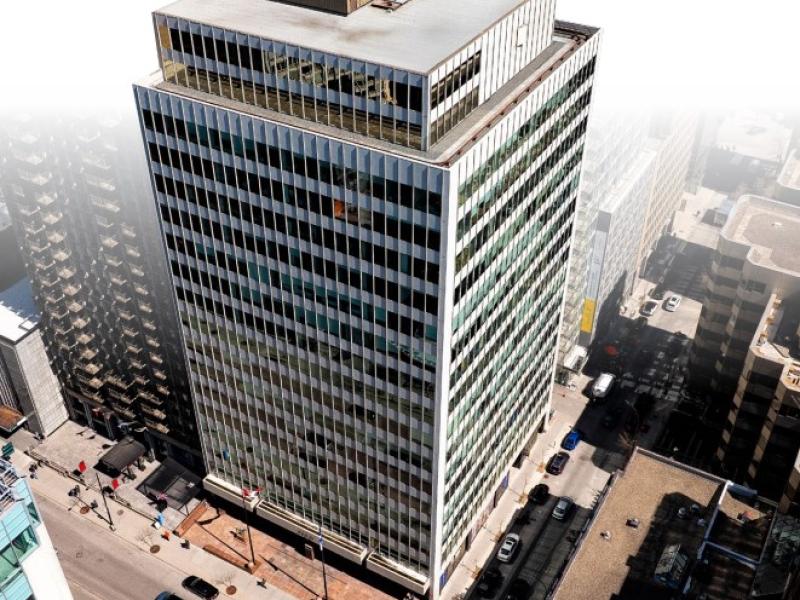For bricks-and-mortar retail, the sky is falling. For bricks-and-mortar retail, a rebirth is at hand.
Which is it? Recent news articles have said both things.
Take this one, published in some form in recent weeks by media outlets across Canada and the U.S., about a retail apocalypse sweeping North America: “It’s only April but in America it’s been announced already that some 6,000 stores are closing. That same number closed over the whole year in 2018.”
Conversely, a recent Bloomberg article reports the generation of shoppers currently under the age of 22, Generation Z, is behaving differently than its predecessor, the generation that includes all those old people between 22 and 35. This should come as no surprise to anybody as it’s always the young who drive change in society, whether it be language, or, in this case, buying behaviour.
Gen Z in the driver’s seat
The bricks-and-mortar retailers who succeed will be the ones that keep their ears to the ground listening to the cohort of buyer that is new and spending more money than other (older) cohorts. According to the Bloomberg article, this new cohort of shoppers is giving bricks-and-mortar retail a second wind because they seem to enjoy the communal activity of shopping.
(I can extrapolate from this there may be hope yet for a generation challenged by social isolation and mental health issues due to their device habits. They no doubt have those smartphones out to research their purchases while standing in the store aisle, but that is a subject for another column.)
It’s also worth noting the retail apocalypse article linked to above features a picture of a former Sears outlet with a bunch of people my age walking out the door. One of the takes from this is, if you’re a retailer focusing on the first half of the baby boomers or the generation that preceded them, you are sunk.
Baby boomers have shot their bolt in terms of shopping. To a large extent, they are not all that concerned with fashion trends and have turned their focus to saving for retirement.
That group under the age 22, meanwhile, wouldn’t even consider baby boomers as being among the same species as themselves, and wouldn’t give retirement a second thought, or perhaps not even their first thought. They’re young, invincible and immortal, and some will shop ’til they drop.
How this matters to municipalities
A recent related article addresses the taxation problem municipalities face from the disappearance of certain types of real estate, and the resulting dip in property tax revenue.
There are many examples of old and large retail buildings that have become obsolete due to their age, the shifting demographics and economic fortunes of the neighbourhoods/communities they serve, or some combination thereof. They are now being demolished, eliminating the assessment and the property taxes they used to pay.
Put this in the context of the retail apocalypse/rebirth story. Even if a new generation of consumer does want to visit an actual physical store again, that doesn’t mean they will want to be served where, when and how their parents and grandparents were.
Bricks-and-mortar retailers can’t breathe a sigh of relief quite yet. Their existing stocks of real estate may still need extensive refurbishment, even relocation, to appeal to this new generation of consumer and be physically close to where they choose to live.
This still means a period of volatility for a municipality from this segment of its commercial tax base.
The City of Calgary, for example, is facing a real challenge with a drop in the value of commercial real estate in the core, which used to fuel its assessment base. Calgary’s situation is admittedly rather unique as a result of the real challenges Alberta faces in relation to the petroleum industry, which is having really tough times right now.
However, that doesn’t mean Calgary is alone in facing such challenges.
In addition to these socio-economic trends fuelled by the young, almost all municipalities across Canada face expense challenges from ever-increasing costs for labour, the repair of aging infrastructure and the increased demand for services. That increased service demand stems both from their own residents and as a consequence of service downloading by provincial governments.
Government overlap part of the problem?
Which brings me to my last point, because nothing exists in a silo – it’s all interconnected. As I have said a number of times before, taxation is the price of freedom. But we need a tax system that works, is viewed as fair by the taxpayer, and is effective in terms of supporting overall economic growth and activity.
Provincial governments in most instances face the dilemma of chronic deficits. One of the things I ask from time to time is, has the overlap between provincial and municipal responsibilities grown too great?
Take Ontario. It now appears as if the City of Toronto has two mayors; one officially, the other a fellow who appears to want to really be mayor, working out of an office at Queen’s Park.
Is this really the most efficient way of doing things? Or, are we reaching a point where one of these two levels of government will become obsolete?
If the latter is the case, I’m not sure which of the two levels is the problem!
To discuss this or any valuation topic in the context of your property, please contact me at jclark@regionalgroup.com. I am also interested in your feedback and suggestions for future articles.







